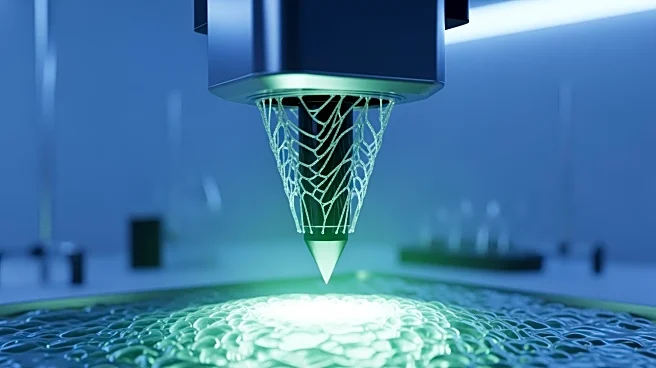What's Happening?
A Canadian research team has innovatively repurposed the mouthparts of female Aedes aegypti mosquitoes to create ultra-fine nozzles for 3D printers. This development, termed '3D necroprinting,' allows
for the fabrication of extremely tiny structures, potentially aiding in the production of transplant organs. The team, led by a professor at McGill University, found that these mosquito-derived nozzles can print structures as small as 20 micrometers, surpassing the capabilities of commercially available nozzles. The process is cost-effective, with each nozzle costing less than $1 to produce, and can be easily integrated into existing 3D printers. This technique is part of a broader trend of using biological materials for technological applications, such as drones using moth antennae and necrobots using spider corpses.
Why It's Important?
This breakthrough in 3D printing technology could significantly impact the field of medical science, particularly in the production of artificial organs. By enabling the creation of finer structures, this method could improve the precision and effectiveness of organ transplants, potentially saving lives. The use of biological materials in technology also highlights a shift towards more sustainable and innovative solutions in engineering. This development could lead to cost reductions in medical manufacturing and open new avenues for research in bioengineering and regenerative medicine.
What's Next?
The research team plans to further explore the applications of this technology in medical science, particularly in the development of bioinks for printing biological tissues. As the technique becomes more refined, it may attract interest from medical device manufacturers and researchers in regenerative medicine. The scalability and cost-effectiveness of the process could lead to wider adoption in the industry, potentially revolutionizing the way transplant organs are produced.
Beyond the Headlines
This innovation raises ethical and environmental questions about the use of living organisms in technology. While the benefits are clear, the implications of using biological materials for industrial purposes need careful consideration. Additionally, the long-term effects of integrating such technologies into medical practices will require thorough evaluation to ensure safety and efficacy.















